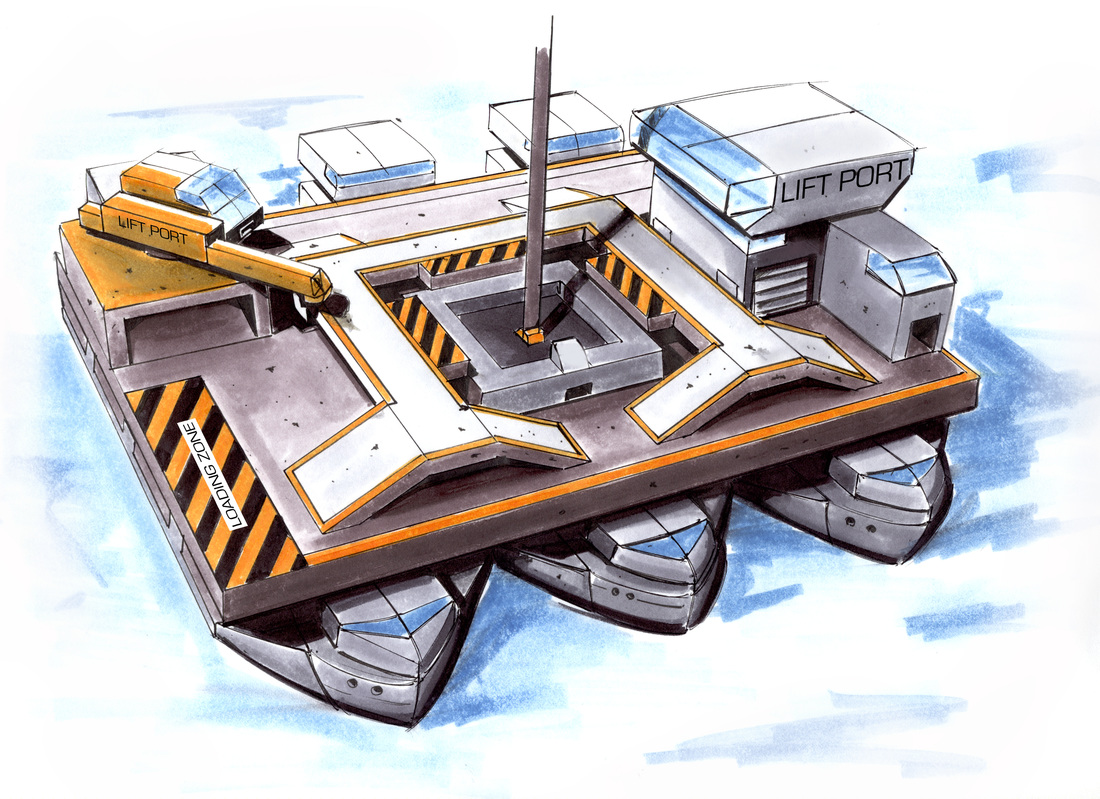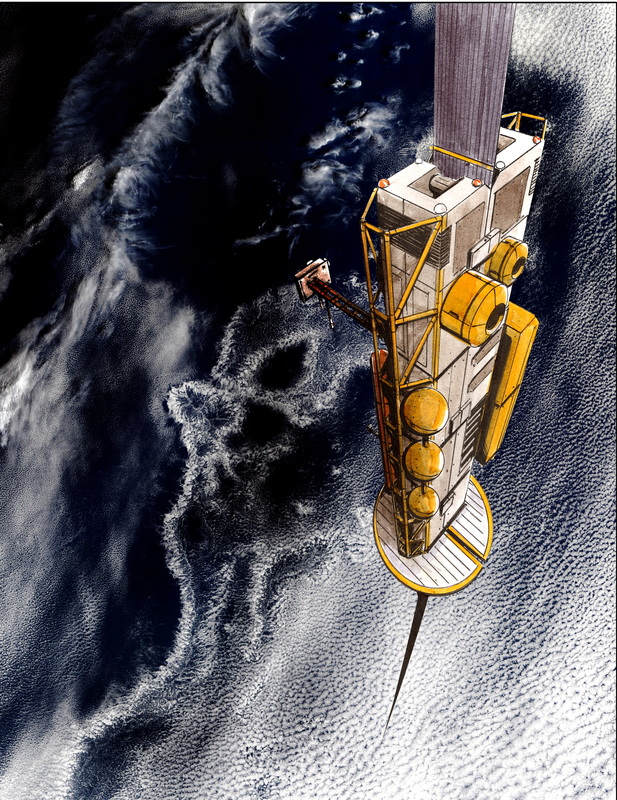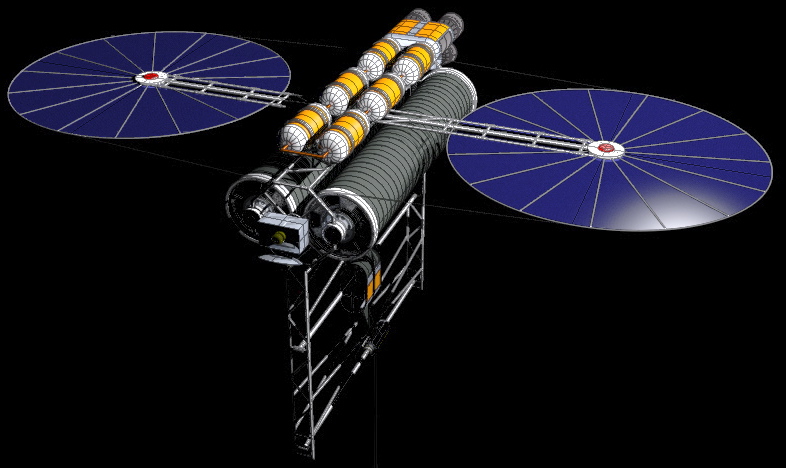An Earth Elevator is a proposed space transportation system. The main component is a cable (or ribbon) anchored to the surface and extending into space. The design would permit vehicles to travel along the cable from a planetary surface like the Earth or Moon directly into space without needing large rockets. An Earth Elevator would consist of a cable with one end attached to the surface near the equator and the other end in space beyond geostationary orbit (35,800 km up). The competing forces of gravity, which is stronger at the lower end, and the outward/upward centripetal force, which is stronger at the upper end, would result in the cable being held up under tension and stationary over a single position on Earth. Below is a little more on each of the main components of a space elevator.
|
The RibbonThis is the part of the Elevator that is preventing us from building one here on Earth today. The combined forces of gravity and centripetal acceleration on any known material in the shape we need would snap it. As such we need a material with extremely high tensile strength that is also very light. Technically, we could build an Earth Elevator today with existing materials, but it would need to be so large to withstand the forces acting upon it that it would be completely impractical to build.
|
The LifterThe Lifter is what will carry you, me, and our cargo out into space. It is the elevator part of the space elevator, but this one hopefully won't require you to stand awkwardly next to strangers. Instead, it will be designed for comfort over time, as the trip will be long. You can expect an insane view from the windows as you watch the Earth fade away below you. Many different Lifter designs are possible, such as ones with beds and seats for passengers, or more bare lifters for large cargo. The lifter will likely travel up and down the ribbon using electricity.
|
The CounterweightWhile the satellite that lowers the ribbon to Earth will be in GEO (Geostationary orbit), that’s not where the Space Elevator will end. The tether will be sent out deeper into space, and at the end a counterweight will hold the tether taut. If you tie a string to a ball and spin it over your head, you can see this in action. The ball spinning over your head is the counterweight, pulling the string straight.
|





